
Laura Sanders
Senior Writer, Neuroscience
Laura Sanders reports on neuroscience for Science News. She wrote Growth Curve, a blog about the science of raising kids, from 2013 to 2019 and continues to write about child development and parenting from time to time. She earned her Ph.D. in molecular biology from the University of Southern California in Los Angeles, where she studied the nerve cells that compel a fruit fly to perform a dazzling mating dance. Convinced that she was missing some exciting science somewhere, Laura turned her eye toward writing about brains in all shapes and forms. She holds undergraduate degrees in creative writing and biology from Vanderbilt University in Nashville, where she was a National Merit Scholar. Growth Curve, her 2012 series on consciousness and her 2013 article on the dearth of psychiatric drugs have received awards recognizing editorial excellence.

Trustworthy journalism comes at a price.
Scientists and journalists share a core belief in questioning, observing and verifying to reach the truth. Science News reports on crucial research and discovery across science disciplines. We need your financial support to make it happen – every contribution makes a difference.
All Stories by Laura Sanders
-
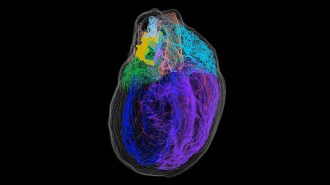 Neuroscience
NeuroscienceA new 3-D map illuminates the ‘little brain’ within the heart
Microscopy and genetic studies yield a comprehensive map of the nerve cells found in the heart of a rat.
-
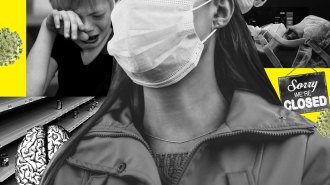 Neuroscience
NeuroscienceHow coronavirus stress may scramble our brains
The pandemic has made clear thinking a real struggle. But researchers say knowing how stress affects the brain can help people cope.
-
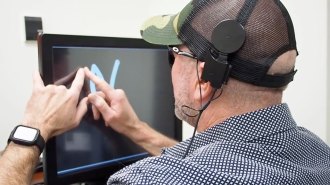 Neuroscience
NeuroscienceBlind people can ‘see’ letters traced directly onto their brains
Arrays of electrodes can trace shapes onto people’s brains, creating bursts of light that people can “see.”
-
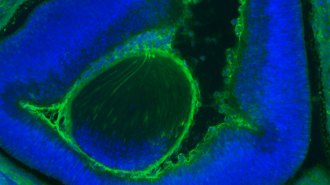 Genetics
GeneticsNew hybrid embryos are the most thorough mixing of humans and mice yet
Human-mice chimeras may usher in a deeper understanding of how cells build bodies.
-
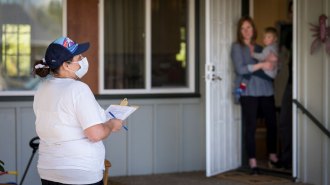 Health & Medicine
Health & MedicineDoor-to-door tests help track COVID-19’s spread in one Oregon town
Surveying neighborhoods directly may give a more accurate view than mail-in tests and other methods, researchers say.
-
 Neuroscience
NeuroscienceA game based on Simon shows how people mentally rehearse new information
Signs of learning echo through people’s resting brains.
-
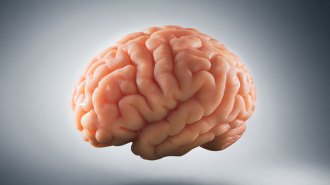 Neuroscience
Neuroscience‘The Idea of the Brain’ explores the evolution of neuroscience
Despite advances, much about the human brain is still a mystery, a new book shows
-
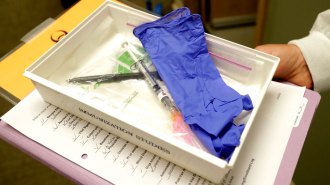 Health & Medicine
Health & MedicineMeet Sophia Upshaw, a volunteer in a coronavirus vaccine trial
In Seattle and Atlanta, scientists have started testing the safety of a potential vaccine to prevent COVID-19.
-
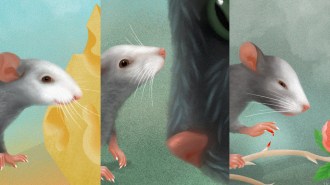 Neuroscience
NeuroscienceMice’s facial expressions can reveal a wide range of emotions
Pleasure, pain, fear and other feelings can be reflected in mice’s faces, sophisticated computational analyses show.
-
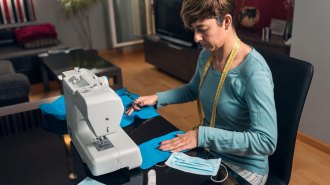 Health & Medicine
Health & MedicineFace mask shortages have sparked creative solutions. Will they work?
Homemade masks, reusing masks and even scuba gear are some of the ideas for dealing with health care workers’ lack of supplies during the COVID-19 pandemic.
-
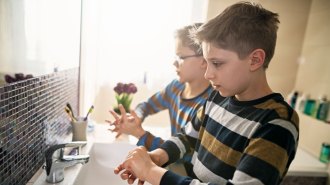 Health & Medicine
Health & MedicineHow parents and kids can stay safe and sane during the coronavirus pandemic
Infectious disease experts weigh in on playdates, playgrounds and other parenting questions.
-
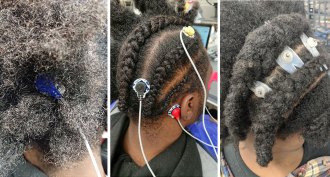 Science & Society
Science & SocietyNew electrodes can better capture brain waves of people with natural hair
Electrodes weren’t designed for people with thick, curly hair. A redesign is needed, says engineer Pulkit Grover.